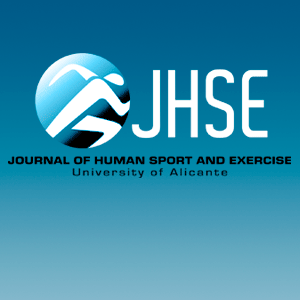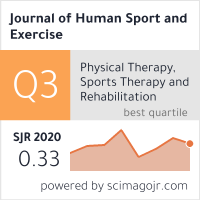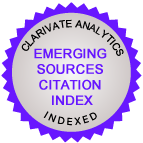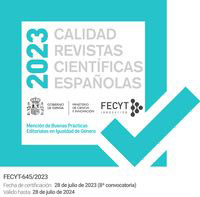The use of dietary supplements among soccer referees: How much do they know?
DOI:
https://doi.org/10.14198/jhse.2019.144.14Keywords:
Dietary supplements, Soccer, Football, RefereeAbstract
Referees are essential for the correct execution of each soccer match and national soccer associations support them with physical training guidelines in order to improve agility, aerobic and sprint capacity, to reduce the risk of injury and to meet the minimum required performance levels. Despite the importance given to performance skills no specific nutritional guideline is provided to support the performance required. This study was aimed to investigate soccer field and assistant referees knowledge and consumption of dietary supplements. Seventy-one European referees participated to this survey by filling a short and quick anonymous questionnaire designed to collect information about their refereeing category, educational level, frequency of supplement consumption, type of supplement consumed. Moreover, a sub-group of 20 participants wore a training watch to record energy expenditure, distance, and heart rate during training sessions and matches. Our data show that referees frequently consume supplements especially those refereeing in lower categories, moreover they often follow a friend’s suggestion when deciding to take a supplement instead of trusting a professional prescription. According to our survey, national and international soccer federations should care more about their referee nutritional education.
Downloads
References
Al Sayed, C., Vinches, L., & Hallé, S. (2017). Validation of a Wearable Biometric System's Ability to Monitor Heart Rate in Two Different Climate Conditions under Variable Physical Activities. E-Health Telecommunication Systems and Networks, 6, 19-30. https://doi.org/10.4236/etsn.2017.62002
Anderson, L., Orme, P., Naughton, R. J., Close, G. L., Milsom, J., Rydings, D., . . . Morton, J. P. (2017). Energy Intake and Expenditure of Professional Soccer Players of the English Premier League: Evidence of Carbohydrate Periodization. Int J Sport Nutr Exerc Metab, 27(3), 228-238. https://doi.org/10.1123/ijsnem.2016-0259
Casajus, J. A., & Castagna, C. (2007). Aerobic fitness and field test performance in elite Spanish soccer referees of different ages. J Sci Med Sport, 10(6), 382-389. https://doi.org/10.1016/j.jsams.2006.08.004
Castagna, C., Abt, G., & D'Ottavio, S. (2007). Physiological aspects of soccer refereeing performance and training. Sports Med, 37(7), 625-646. https://doi.org/10.2165/00007256-200737070-00006
Castagna, C., Bendiksen, M., Impellizzeri, F. M., & Krustrup, P. (2012). Reliability, sensitivity and validity of the assistant referee intermittent endurance test (ARIET) - a modified Yo-Yo IE2 test for elite soccer assistant referees. J Sports Sci, 30(8), 767-775. https://doi.org/10.1080/02640414.2012.668705
D'Ottavio, S., & Castagna, C. (2002). Physiological aspects of soccer refereeing. London: Routledge.
FIFA-communication-division. (2007). FIFA big count 2006: 270 milion people active in football.
FIFA. (2006). Special needs of the referees. Retrieved from https://img.fifa.com/image/upload/solimkrf1mlxht5cxcgr.pdf
FIFA. (2016). FIFA fitness test for referees and assistant referees. Regulations on the Organisation of Refereeing in FIFA Member Associations. Retrieved from https://resources.fifa.com/mm/document/tournament/competition/01/28/10/42/defs_regulationsorganisationrefereeinginfifama_inhalt.pdf
FIFA. (2017). FIFA. Laws of the Game. Retrieved from https://football-technology.fifa.com/media/1245/lotg_17_18_en.pdf
Gabrilo, G., Ostojic, M., Idrizovic, K., Novosel, B., & Sekulic, D. (2013). A retrospective survey on injuries in Croatian football/soccer referees. BMC Musculoskelet Disord, 14, 88. https://doi.org/10.1186/1471-2474-14-88
MacMahon, C., Helsen, W. F., Starkes, J. L., & Weston, M. (2007). Decision-making skills and deliberate practice in elite association football referees. J Sports Sci, 25(1), 65-78. https://doi.org/10.1080/02640410600718640
Malaguti, M., Angeloni, C., & Hrelia, S. (2013). Polyphenols in exercise performance and prevention of exercise-induced muscle damage. Oxid Med Cell Longev, 2013, 825928. https://doi.org/10.1155/2013/825928
Mendez-Villanueva, A., & Buchheit, M. (2013). Football-specific fitness testing: adding value or confirming the evidence? J Sports Sci, 31(13), 1503-1508. https://doi.org/10.1080/02640414.2013.823231
Pobiruchin, M., Suleder, J., Zowalla, R., & Wiesner, M. (2017). Accuracy and Adoption of Wearable Technology Used by Active Citizens: A Marathon Event Field Study. JMIR Mhealth Uhealth, 5(2), e24. https://doi.org/10.2196/mhealth.6395
Schenk, K., Bizzini, M., & Gatterer, H. (2018). Exercise physiology and nutritional perspectives of elite soccer refereeing. Scand J Med Sci Sports, 28(3), 782-793. https://doi.org/10.1111/sms.12989
Teixeira, V. H., Goncalves, L., Meneses, T., & Moreira, P. (2014). Nutritional intake of elite football referees. J Sports Sci, 32(13), 1279-1285. https://doi.org/10.1080/02640414.2014.887851
Weston, M., Drust, B., Atkinson, G., & Gregson, W. (2011). Variability of soccer referees' match performances. Int J Sports Med, 32(3), 190-194. https://doi.org/10.1055/s-0030-1269843
Weston, M., Helsen, W., MacMahon, C., & Kirkendall, D. (2004). The impact of specific high-intensity training sessions on football referees' fitness levels. Am J Sports Med, 32(1 Suppl), 54S-61S. https://doi.org/10.1177/0363546503261421
Wiens, K., Erdman, K. A., Stadnyk, M., & Parnell, J. A. (2014). Dietary supplement usage, motivation, and education in young, Canadian athletes. Int J Sport Nutr Exerc Metab, 24(6), 613-622. https://doi.org/10.1123/ijsnem.2013-0087
Downloads
Statistics
Published
How to Cite
Issue
Section
License
Copyright (c) 2019 Journal of Human Sport and Exercise

This work is licensed under a Creative Commons Attribution-NonCommercial-NoDerivatives 4.0 International License.
Each author warrants that his or her submission to the Work is original and that he or she has full power to enter into this agreement. Neither this Work nor a similar work has been published elsewhere in any language nor shall be submitted for publication elsewhere while under consideration by JHSE. Each author also accepts that the JHSE will not be held legally responsible for any claims of compensation.
Authors wishing to include figures or text passages that have already been published elsewhere are required to obtain permission from the copyright holder(s) and to include evidence that such permission has been granted when submitting their papers. Any material received without such evidence will be assumed to originate from the authors.
Please include at the end of the acknowledgements a declaration that the experiments comply with the current laws of the country in which they were performed. The editors reserve the right to reject manuscripts that do not comply with the abovementioned requirements. The author(s) will be held responsible for false statements or failure to fulfill the above-mentioned requirements.
This title is licensed under a Creative Commons Attribution-NonCommercial-NoDerivatives 4.0 International license (CC BY-NC-ND 4.0).
You are free to share, copy and redistribute the material in any medium or format. The licensor cannot revoke these freedoms as long as you follow the license terms under the following terms:
Attribution — You must give appropriate credit, provide a link to the license, and indicate if changes were made. You may do so in any reasonable manner, but not in any way that suggests the licensor endorses you or your use.
NonCommercial — You may not use the material for commercial purposes.
NoDerivatives — If you remix, transform, or build upon the material, you may not distribute the modified material.
No additional restrictions — You may not apply legal terms or technological measures that legally restrict others from doing anything the license permits.
Notices:
You do not have to comply with the license for elements of the material in the public domain or where your use is permitted by an applicable exception or limitation.
No warranties are given. The license may not give you all of the permissions necessary for your intended use. For example, other rights such as publicity, privacy, or moral rights may limit how you use the material.
Transfer of Copyright
In consideration of JHSE’s publication of the Work, the authors hereby transfer, assign, and otherwise convey all copyright ownership worldwide, in all languages, and in all forms of media now or hereafter known, including electronic media such as CD-ROM, Internet, and Intranet, to JHSE. If JHSE should decide for any reason not to publish an author’s submission to the Work, JHSE shall give prompt notice of its decision to the corresponding author, this agreement shall terminate, and neither the author nor JHSE shall be under any further liability or obligation.
Each author certifies that he or she has no commercial associations (e.g., consultancies, stock ownership, equity interest, patent/licensing arrangements, etc.) that might pose a conflict of interest in connection with the submitted article, except as disclosed on a separate attachment. All funding sources supporting the Work and all institutional or corporate affiliations of the authors are acknowledged in a footnote in the Work.
Each author certifies that his or her institution has approved the protocol for any investigation involving humans or animals and that all experimentation was conducted in conformity with ethical and humane principles of research.
Competing Interests
Biomedical journals typically require authors and reviewers to declare if they have any competing interests with regard to their research.
JHSE require authors to agree to Copyright Notice as part of the submission process.






